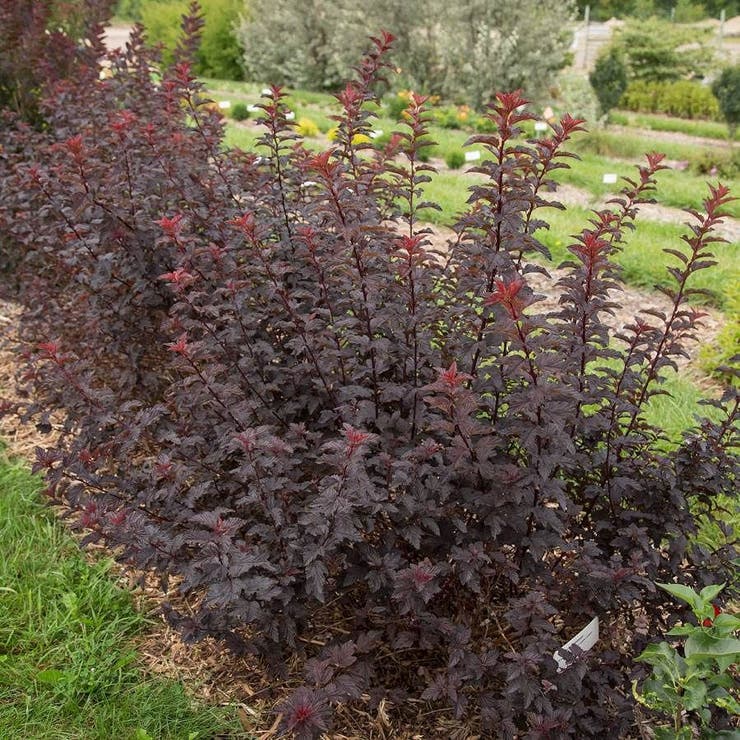Physocarpus Fireside® Ninebark

Your zip code
- Buy 3 for $36.00 each and save 10%
Description / Physocarpus Fireside® Ninebark
A First Editions® introduction, Fireside® Ninebark is a native flowering deciduous shrub offering 3 seasons of interest, grown for its stunning foliage and spherical clusters of small pinkish white flower "buttons", which arise in spring. The foliage emerges reddish in color, matures to a deep reddish purple for summer, and turns dark purple in fall. The attractive reddish to light brown exfoliating layers of bark on mature branches is fairly concealed most of the year but adds winter interest.
A Physocarpus opulifolius, commonly called common ninebark or Atlantic ninebark, Fireside Ninebark has a tidy, upright, rounded habit and slow to moderate growth rate. Ninebarks are closely related to spireas and grow naturally on rocky hillsides and along stream banks and woodland edges. They are a trouble-free way to add gorgeous color into the garden or landscape as a specimen in a mixed bed or container or grouped as a deciduous hedge.
Tough, cold hardy, and easy to grow, Fireside Ninebark prefers full sun and average, slightly acidic, dry to medium moisture, well-drained soil, but it tolerates a wide range of soils, including shallow rocky soil, and is a good choice for areas of erosion. The shrub is powdery mildew resistant and drought tolerant. It can be pruned as desired immediately after blooming or cut close to the ground in winter for rejuvenation.
A native plant, Fireside Ninebark is indigenous to central and eastern North America. Native plants are not only beautiful but also environmentally friendly. Naturally adapted to the climate and soil conditions of the region, they thrive without fertilizers or extra watering, once established. They also act as natural pest controls, reducing the need for pesticides in the garden. Landscaping with native plants promotes biodiversity and provides shelter and quality food for wildlife and pollinators, bringing gardens to life.
Product Details
| SKU | 29032 |
|---|---|
| Item Form | 2-Quart |
| Genus | Physocarpus |
| Species | opulifolius |
| Variety | 'UMNHarpell' |
| Plant Patent | PP30792 |
| Product Classification | Shrubs |
| Habit | Upright |
| USDA Zone Low | 3 |
| USDA Zone High | 7 |
| Sun / Shade | Full Sun |
| Moisture Level | Moist, well-drained |
| Soil Type | Normal, loamy, Clay, Sandy, Poor |
| Bloom Color | Pink, Purple, White |
| Max Bloom Size | 3.00 |
| Bloom Season Start | Early Spring |
| Bloom Season End | Late Spring |
| Foliage Color | Purple, Red |
| Mature Width in Inches | 72.00 |
| Mature Height in Inches | 84.00 |
| Resistance | Cold Hardy |
| Special Features | Bloom First Year, Easy Care Plants, Fall Color |
| Uses | Beds, Containers, Fall Color, Foliage Interest, Hedge, Specimen |
| Zone | 3, 4, 5, 6, 7 |
| State Shipping Restrictions | GU, HI, ID, PR, VI |
| Shipping Method Restrictions | none |
